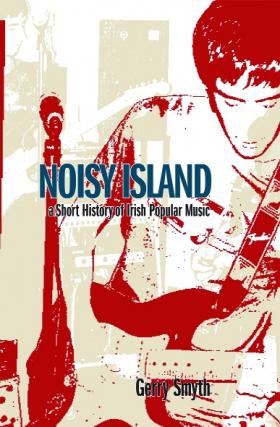Noisy Island: a short history of Irish popular music
Published in 18th-19th Century Social Perspectives, 18th–19th - Century History, 20th Century Social Perspectives, 20th-century / Contemporary History, Book Reviews, Issue 5 (Sep/Oct 2006), Reviews, Volume 14 Noisy Island: a short history of Irish popular music
Noisy Island: a short history of Irish popular music
Gerry Smyth
(Cork University Press, E19.95)
ISBN 1859183875
Did you ever have the feeling that many aspects of our lives would be better kept out of academic hands—and minds? This was my initial reaction as I waded through the introduction to Gerry Smyth’s Noisy Island. Rock and roll the vocabulary is not! However, after the historical and sociological parameters were laid down, the book proved to be a brisk compact survey of the Irish music scene since the late 1950s.
The period covered in Noisy Island coincides exactly with my own life, when Ireland, in spite of the tragedy unfolding in the North and a catastrophic economy, got to grips with itself, side-stepped away from Britain and on to the European stage. The music scene adapted to new circumstances like digital recording and easier access to recording equipment. Management became more focused on selling the product and music became a business.
In 1967 I saw the Kinks play a short set in the Astoria Ballroom, Bundoran. My friends and I were appalled to discover that, compared to the musicians in the supporting showband, the Kinks could hardly play. In spite of this we were thrilled to hear a chart-topping English band perform their own music. We went to the ballrooms to meet girls. These venues were huge and garish, the music smooth professional cover-versions of whatever was popular, and there was no alcohol served. The showbands were great at what they did but we craved originality.
It took a while. It took a while everywhere, but in Ireland (while we were waiting!) we could always slip down to some pub or to Islandbridge Rowing Club and listen to the very finest acoustic traditional music. This parallel musical universe expanded even more successfully than its pop/rock partner, and anyone who has grown up in Ireland during the last 40 years has been influenced by it. It is a feature of Irish musical life that many of the same people support both the trad and the pop/rock cultures.
The concept of ‘Irishness’ in music is a recurring theme in this book. If in the early days it was understood as a badge of origin, it rapidly became a supreme marketing tool. Because of the enduring success of the ballad-style music of the Clancy Brothers, the Dubliners and even the Wolfe Tones, plus the stunning impact of the Riverdance show later on, there is now a worldwide awareness and recognition of Irish music. These days the very fact that a band or singer comes from Ireland is used as a positive selling point regardless of any ‘Irish’ content. Hence the young girls who flock to a Damian Rice concert, whether it be in Copenhagen or LA, relate to him as a singer of great songs and because he is Irish.
Gerry Smyth runs through the great names of the last 40 years—from Van Morrison and Phil Lynnot to U2, Sinéad O’Connor and the Corrs, and right down to Damien Dempsey, a latter-day incarnation of Luke Kelly but one who writes his own material. That parallel folk/trad scene had its standard-bearers—Sweeny’s Men, Planxty, the Bothy Band, Paul Brady—it’s a long list. Because of the brevity of the book some aspects of the music scene are hardly touched on. Country music, a constant factor in Irish musical life, only merits a couple of mentions, and hip hop is passed off as having been basically inspired by Eminem.
I would also have expected some discussion of the expatriate Irish music scene, which in these days of globalisation has a direct influence on the contemporary folk and trad scene in Ireland itself. The likes of flute-player Michael McGoldrick from Manchester and Solas and Eileen Ivers from the US are among the heroes of the young traditional musicians in Galway and Dublin. McGoldrick’s recording Fused (2000) is one of the ground-breaking folk albums of all time, mixing traditional with trance and fusion.
Gerry Smyth makes the point that to certain cultural commentators popular music is regarded as a debased cultural form. He himself is inspired by the work of the French music theorist Jacque Attali, who shifted the analysis of music to the academic stage. Music, he claimed, was a form of prophecy being pushed along at the forefront of human development.
The book has 136 pages of text, and 45 covering index, discography, bibliography and copious notes. This is an ideal reference source for further reading, and Noisy Island will undoubtedly provoke further analysis.
Eugene Graham is a music promoter based in Copehagen
















